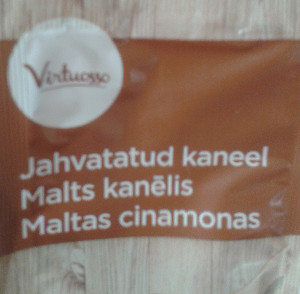This is the last post in a series on Finnic influences in Latvia. You can also read the other posts in the series about Finnic influence on place names and personal names, as well as read about population crossover at the links provided. This and other posts like it are made possible by my patrons at Patreon.
At first glance, it might look like Finnic and Baltic languages are completely unrelated – and indeed they are from different language families, with Baltic languages like Latvian and Lithuanian being Indo-European, while Finnic languages such as Estonian and Livonian are a part of the Finno-Ugric language family. If you were to look at a random sample of text from the languages, you probably also wouldn’t see very many similarities. But that all depends on the sample of text:
Estonian: Me läksime mõisast turule, et porgandeid ja seeni osta.
Latvian: MÄ“s gÄjÄm no muižas uz tirgu lai pirkt burkÄnus un sÄ“nes.
English: We went from the manor to the market to buy carrots and mushrooms.
If you look at the words in bold, the differences aren’t that big, are they? Especially if you know that in its non-declined form, “turule” is “turg”, and that p/b and g/k sounds sometimes blend together in Estonian.
Other words common to Latvian and Estonian, though which language they have roots in can sometimes be disputed – laiva/laev (boat, ship), tilts/sild (bridge), puika/poeg (boy), kode/koi(d) (moth), laulÄt/laulatada (to marry), bura/puri (sail) and mÄja/maja (house). Of course, there are many more, these are just a few examples!
Many centuries of foreign rule means that there are also words common to Estonian and Latvian that are borrowed from a third language (or sometimes even fourth, if the third language has borrowed the word). This is the case for words such as arst/Ärsts (doctor, Arzt in German), sidron/citrons (lemon, Zitrone in German) and advokaat/advokÄts (lawyer, адвокат in Russian). The latter two have roots in Latin, and were probably borrowed into German and Russian via French.
Spice packet for cinnamon in the three languages of the Baltic countries – note how Estonian and Latvian have both borrowed from the Germanic “kanel” while Lithuanian has gone the Latin/Greek route of “cinnamon”.
Beyond vocabulary, Finnic languages have had an important influence on Latvian: word stress. In Lithuanian, as well as in Slavic languages – Baltic languages’ closest relatives – word stress is random and can occur anywhere in the word, which can be a real pain for people who are learning the language. But in Latvian, like in Finnic languages, word stress is almost always on the first syllable.
How did such a pivotal language feature come to be so different from that of related languages? While I’m not 100% certain, I think it comes down to the fact that modern Latvian isn’t strictly speaking “purely” Indo-European – while its roots are certainly Indo-European, it is a language that came about through the melding of several Baltic-area tribes. And while most of the Baltic-area tribes in question (Selonians, Semigallians, Curonians, Latgalians) were Baltic-speaking, one of them – the Livonians – was not. And since the Livonians had influence on both sides of the Gulf of RÄ«ga – that is, northern Kurzeme *and* northern Vidzeme – it is not entirely surprising that this language feature was adopted into the common language.
So this concludes this series on Finnic influences in Latvia! If you have any questions, please leave them in comments! And if you have opinions on what you would like to see next – feel free to comment as well!


Pingback: Mappy Monday – Crossing the Northern Border | Discovering Latvian Roots